Tragic story of mysterious and magnificent windows
As the formidable Theodosia Hinckes, and all those who were to follow her in living at the long-demolished Tettenhall Wood House, climbed to the top of the stairs of the imposing Gothic mansion, she was bathed in the light streaming through the beautiful stained glass windows.
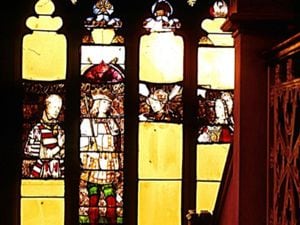
They were both magnificent and mysterious. Because while the imposing mansion on the outskirts of Wolverhampton was built for her between 1833 and 1836, those windows were medieval and Flemish. So how had they got to Wolverhampton?
Now some detective work by 87-year-old retired architect Keith Cattell has uncovered the astonishing – and ultimately somewhat tragic – story of those splendid windows.
It is a tale in which there are villains ranging from marauding French troops, to Hitler’s airmen and, surprisingly, a reputable stained glass studio.
The upshot is that after being variously smashed, blown up by the Luftwaffe, and binned, today the only known bit left of what was once a four light window is mounted and backlit as a feature under the landing balcony of his Wolverhampton home.
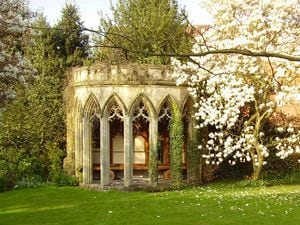
Nor is it the only relic of the building he has saved for posterity. He also salvaged the dining room bay window, which has been re-erected as a folly in his garden.
“If I hadn’t saved it, it would have ended up in landfill,” says Keith.
The Wood House estate was bounded by Wood Road, Grange Road, Regis Road, and Long Lake, and at the time of the demolition of its centrepiece, Tettenhall Wood House, just over 50 years ago, Keith was converting an old barn just a stone’s throw away, so was able to pop along to the sale of contents.
There was a demolition sale comprising more than 1,300 lots, including the grand staircase windows, in August 1969, and demolition started a couple of months later. Sadly, those staircase windows were not what they had once been. During the war a German bomb fell on the other side of Wood Road blowing out more than half the precious glass.
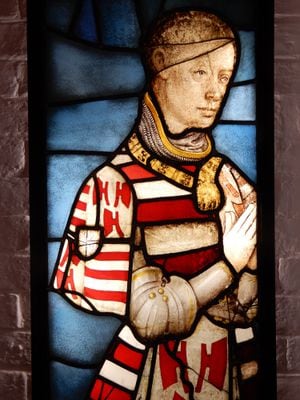
Keith said: “Unfortunately there appear to be no records of the missing panels. It has always been my hope that one day an old photograph of the stained glass before the bomb damage might turn up. The remains of the stained glass in the staircase window intrigued me because it was obviously much older than the house but apparently no one knew where it had come from.
“Just two of us bid for it but I dropped out at £50 – a sizeable sum in those days. It was a mad thing to do and I later discovered it had been bought by Miss Gregaines to place in St Peter’s Church, so I felt happy about that.”
Pending a decision on its future the glass was held at a London stained glass studio, but Keith says after four years it transpired that St Peter’s didn’t want the glass.
“When the studio was approached they admitted that they had meanwhile closed their stained glass studio and disposed of all the glass. After contacting their original chief glazier one piece of the glass was located, the kneeling knight wearing his tabard. The rest had all been lost by this supposedly reputable glass company.”

Yet this surviving fragment, which Keith was to buy from Miss Gregaines, proved a key to unlocking the secrets of the windows, because on close inspection there was a detail which could not have been easily seen with the window in situ – a small coat of arms on the sleeve of the tabard.
"A knowledge of heraldry and heraldic conventions led to the knight being identified as Phillipe de Croy of Aerschot, Belgium, who in 1455 had married Jacqueline de Luxembourg, and the style of his tabard pointed to a date of around 1480 for the stained glass panel.
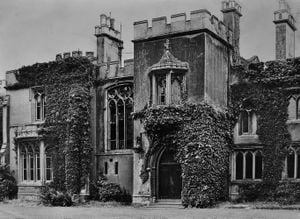
“The small city of Aerschot with its cathedral came within the lands owned by the de Croy family and it would have been natural for them to pay for the installation of stained glass in the cathedral. In 1792 invading French troops desecrated the cathedral, breaking much of the stained glass.
“Not having the money or inclination to repair it, the cathedral authorities, in perhaps 1828, sold the broken windows to pay for plain glass replacements.”
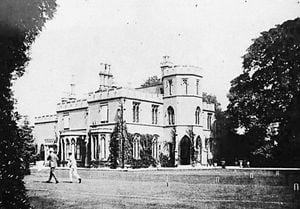
An Englishman named Pratt is thought to have brought the broken stained glass to England and sold it to all and sundry, and it is supposed that this is how Theodosia got the Wolverhampton panels.
However, the glass image of Phillipe was missing his original head, the damage suggesting that the French soldiers had taken pot shots at the glazed images of the Belgian nobility. So Phillipe’s body was given somebody else’s head from the cathedral’s glass, and Keith presumes this was done when the panel was installed at Tettenhall Wood House.





